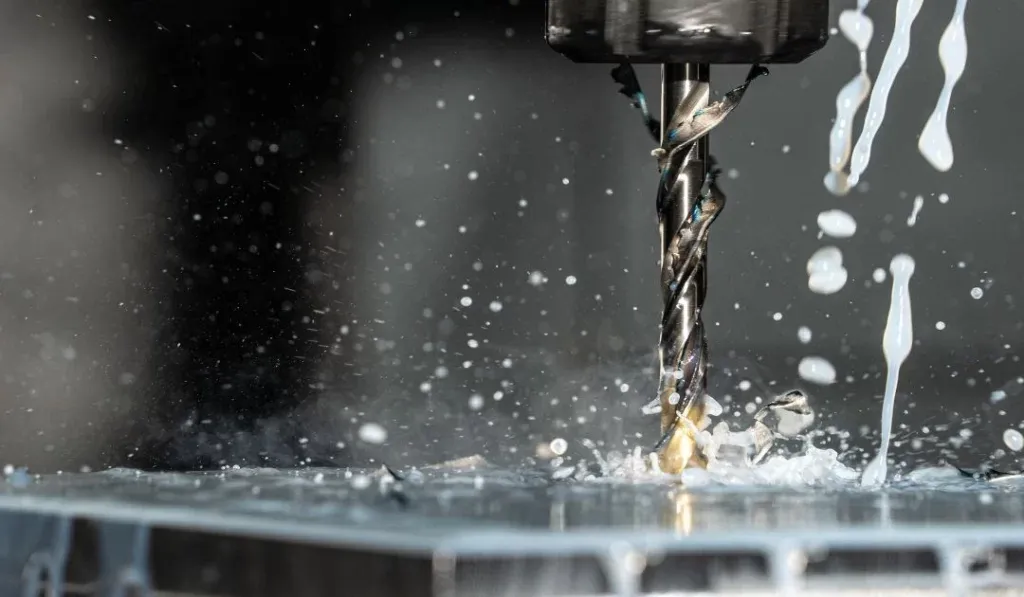Introduction:
EDM fluids, also known as dielectric fluids, are special fluids used in the electrical discharge machining (EDM) process. EDM is a precision machining technique that uses electrical discharge to erode and shape hard materials such as metals with great precision. Dielectric fluids perform several important functions during the EDM process. It acts as an electrical insulator, preventing premature and unwanted electrical discharge between the tool (electrode) and workpiece. This insulation allows controlled discharges to occur, resulting in desirable erosion and shaping effects. The EDM fluid acts as a coolant, dissipating heat generated during the machining process. The discharge creates intense heat at the contact point between the electrode and the workpiece. A dielectric fluid absorbs and dissipates this heat, preventing damage to the workpiece and electrodes. Effective cooling also helps maintain dimensional stability and prevents unwanted internal stresses.
Types of EDM Fluids:
EDM fluids come in a variety of types and formulations to meet different processing needs and material properties. These are mineral oil-based, synthetic hydrocarbon-based, water-based, low viscosity fluids and special fluids with specific additives and properties. The choice of EDM fluid depends on factors such as accuracy required, material being machined, surface finish requirements and environmental considerations. Various types of EDM fluids are available, each with unique properties and uses. Let’s take a look at some of the most common types.
- Mineral Oil- Based EDM Fluid:
A mineral oil-based fluid, often referred to as a hydrocarbon oil, was one of the first EDM fluids used. Inexpensive and widely available. Mineral oil-based fluids have excellent electrical insulating properties and are compatible with a wide variety of materials. However, they have limited flushing capability and are prone to thermal degradation, making them less suitable for high-precision applications.
- Synthetic EDM Fluids:
These are industrial fluids composed of synthetic hydrocarbons, additives, and extreme pressure (EP) agents. These fluids have improved performance compared to mineral oil-based alternatives. It has better thermal stability, a higher flash point, and better resistance to thermal degradation. Synthetic oils are ideal for demanding applications requiring high material removal rates and long processing times. They are particularly good at achieving complex geometries and holding tight tolerances.
- Water-Based EDM fluids:
Water-based EDM fluids, commonly known as dielectric fluids, use deionized (DI) water as the base fluid. These fluids are cheap, environmentally friendly, and readily available. Water-based fluids have excellent cooling properties and effectively wash away residues generated during the machining process. However, they typically have a lower dielectric strength compared to oil-based fluids, which limits their use in high performance EDM applications.
- Low Viscosity EDM fluid:
Low viscosity EDM fluids are designed for high speed machining operations. It has a lower viscosity than traditional EDM fluids, resulting in faster flow rates and better flushing capabilities. Low viscosity fluids are often based on hydrocarbon oils or esters and have excellent resistance to thermal degradation. These fluids are suitable for applications requiring high material removal rates and fast processing times.
- Special EDM Fluids:
In addition to the main types listed above, there are also special EDM fluids tailored for specific applications:
Graphite-based EDM fluids: These fluids contain suspensions of graphite particles that increase processing efficiency and improve surface finish.
Oil-in-water EDM fluid: These emulsion-based fluids combine the benefits of oil-based and water-based fluids, providing both cooling and flushing properties.
Liquids with high dielectric strength: These advanced fluids have significantly higher dielectric strength, making them suitable for high power EDM work.
Note that the selection of the appropriate EDM fluid depends on factors such as required accuracy, material type, processing speed, and specific application requirements. Manufacturers and suppliers provide advice on choosing the best EDM fluid for specific processing scenarios.
Applications of EDM Fluids:
EDM fluids serve as integral components in the machining process, promoting electrical discharge, removing deposits, and providing cooling and lubrication. Its applications span a wide variety of industries using EDM to achieve high precision and complex machining operations. In this section, we look at specific applications of his EDM fluids in key industries.
- Aerospace Industry:
The aerospace industry relies heavily on EDM to manufacture critical components such as turbine blades, fuel nozzles and engine parts. These components often require complex geometries with tight tolerances. EDM fluids, especially synthetic fluids, are used in aerospace applications because they can accommodate high material removal rates, enable efficient residue flushing, and ensure accurate machining of complex geometries.
- Automotive Industry:
In the automotive sector, EDM plays an important role in the production of complex shaped molds, dies and components. EDM fluids containing low-viscosity fluids enable high-speed processing, resulting in faster material removal rates and increased productivity. They help achieve precise tolerances and maintain the integrity of machined parts, ensuring high quality automotive parts.
- Medical Industry:
EDM is used in the medical industry for critical applications in the production of surgical instruments, implants and medical device components. Due to the complex and intricate nature of these components, high precision machining is required. EDM fluids, such as synthetic and water-based solutions, are selected based on specific requirements such as surface finish, dimensional accuracy, and compatibility with biocompatible materials. EDM plays a key role in producing reliable and accurate medical devices.
- Electronics Industry:
The electronics industry relies heavily on his EDM to create complex molds and molds for electronic component manufacturing. Accurate machining of functions and complex shapes is essential to ensure the functionality and reliability of electronic devices. EDM fluids, including specialty fluids such as graphite-based fluids, improve surface finish, reduce electrode wear, and ensure accuracy of machined features. It efficiently washes away dirt, ensuring a clean processing environment and ensuring the production of high-quality electronic components.
- Tool and Mold Making:
EDM machines are extensively used in the tool and die industry to produce molds, punches and dies for various applications. The intricate details and precise geometries required to manufacture tools and dies require high-precision machining. His EDM fluids such as synthetic fluids and low viscosity fluids are commonly used in this industry. It offers high machining precision, efficient dirt removal and longer tool life, ensuring the production of durable and accurate tool components.
- General Machining:
EDM fluids can also be applied in a variety of general machining scenarios that require precision molding and shaping of hard materials. Whether prototyping, creating intricate details, or repairing damaged parts, EDM fluids are essential to achieve the desired surface finish with high precision. Electrical isolation, cooling, debris removal, and lubrication from EDM fluids contribute to successful machining operations across a wide range of applications.
Conclusion:
In summary, EDM fluids play an important role in various industries that use his EDM processing. From aerospace and automotive to medical, electronics and general machining, these fluids enable highly precise and complex forming and efficient material removal. Choosing the right EDM fluid depends on factors such as specific processing requirements, material type, desired surface finish, dimensional accuracy, and environmental considerations. Effective use of EDM fluids enables industries to achieve superior processing results and improve manufacturing processes.










